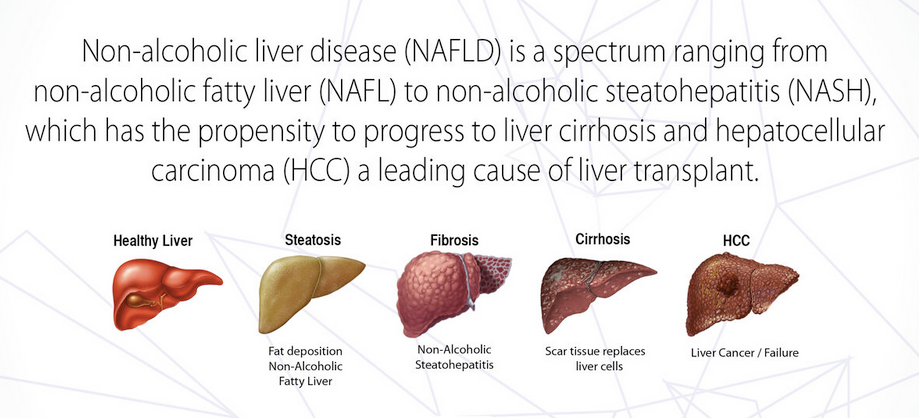
Ioannis P. Capos
PharmD MSc, MBA, PhDBA
*Corresponding author: Ioannis P, PharmD MSc, MBA, PhDBA.
*Corresponding author: Ioannis P, PharmD MSc, MBA, PhDBA.
Received date: January 7, 2021
Accepted date: January 20, 2021
published date: February 08, 2021
Citation: Ioannis P. “The Devastating Effects of Nash, Called the Soda Disease.’’. Gastroenterology and Surgical Gastroenterology, 2(1); DOI: http;//doi.org/18.2021/1.1005.
Copyright: © 2021 Ioannis P. This is an open access article distributed under the Creative Commons Attribution License, which permits unrestricted use, distribution, and reproduction in any medium, provided the original work is properly Cited.
It affects 1% of the world’s population and is growing fast: Nonalcoholic steatohepatitis or NASH, caused by a build-up of fat in the liver, progressively impairs liver function.
Interdiction:
It affects 1% of the world’s population and is growing fast: Nonalcoholic steatohepatitis or NASH, caused by a build-up of fat in the liver, progressively impairs liver function.
We have to stop the majority of patients finding out about the disease by chance, when it’s too late to treat it. Liver damage is painless and silent. So providing information and raising awareness can save lives. Like the heart, the liver, which works to process the nutrients carried by the blood, converting them into vitamins, hormones or fuel for the whole body, is overwhelmed by excess sugar and fat, two components omnipresent in the modern-day diet.
We estimate that 30% of the population is now affected by steatosis, in other words a build-up of fat within the liver.At that stage, we can still act, but it’s the first step to developing NASH, a disease that some public health authorities readily call the 'scourge of the century' and is silently increasing because of what we eat.
Fatty Liver Disease
NASH, the acronym for nonalcoholic steatohepatitis, also known as “soda disease”, is a condition that progressively impairs liver function. As its name suggests, it is caused not by alcoholism or a virus, but by the simple presence of fat, largely resulting from a diet of mass-produced, processed food. Still largely unknown to the general public, the syndrome, affects 1% of the world’s population,
Remaining silent and undetected for several years, NASH develops over several phases. In an initial stage, following a constant excess of nutrients, the liver becomes fatty.If it continues over the long term, the damage can lead to fibrosis. Scar tissue then starts to form inside the organ and surround the hepatocytes, the liver cells particularly involved in breaking down toxic substances. Over time, the normal architecture of the liver changes, becoming harder, and the
blood struggles to circulate, causing cirrhosis, which is likely to develop into cancer. A transplant often becomes essential for survival, which is why NASH is now the main reason for liver transplantation in the U.S.
Global Progression
Linked to a poor diet, but also to prolonged sedentarism, made worse by obesity, diabetes and very probably genetic predispositions, NASH is far from limited to Western countries. The global expansion in fizzy drinks and processed food has contributed to the increasing number of NASH cases in both Asia and Africa. Once essentially diagnosed in patients in their sixties, NASH also seems to affect more and more young adults. Ultimately, the disease results from a mismatch between our physiology and our environment.
For the time being, there is no treatment to cure NASH. Several molecules are, however, currently in phase III clinical studies and being tested on large patient cohorts, raising hopes that a drug will be available within a few years. Recently it is announced the approval of Saroglitazar Mg for the treatment of Non-Alcoholic Fatty Liver Disease in India.
Currently, the only way to make a reliable diagnosis, other than anamnesis, is a liver biopsy, which is an invasive procedure. That’s why it’s only offered to patients presenting with advanced signs of the disease.
If, we are all potential candidates for NASH, how can we reduce steatosis or simply avoid saturating our liver in fat?
We have to remember that it’s all a question of excess.Cholesterol, for example, is essential for cell formation, so we need it. The only thing that I can prescribe is trying to reduce your fat and sugar intake and move more. Obviously, it’s very hard to drastically change your lifestyle, but whilst we don’t have any treatments, prevention is better than cure.
When we look in detail, we can see that some sugars are more damaging than others.Top of the list is essentially corn syrup. With its high fructose content, it has been added to sugary food and drinks since the 1980s. It tends to reduce the feeling of satiety, which means that we eat more." Some fats are also thought to be more beneficial than others. Recent studies c have demonstrated that coconut oil increases the breakdown of fats in the liver, for example. A meta-analysis also claims to prove the positive effects of omega 3, although that remains unproven.
More concretely, recent research has shown that early-stage steatosis in obese children could be reduced very quickly when their calorie intake was changed and sugary foods and drinks were replaced with healthy alternatives, which may reignite public debate on the introduction of a sugar tax.

.